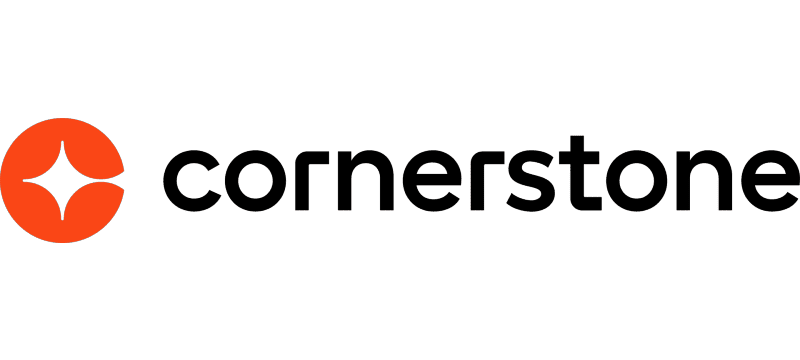How to bring high performance to your skill development
Hear takeaways from Cornerstone People Research Lab’s latest research on how to drive demand for learning and focus on skills development.
Get real-life insights from an HR practitioner on how to build a culture of skills-building and growth.
Understand how creating a smaller skills confidence gap correlates with high organizational performance.



With disruption, uncertainty, and volatility still defining features of the business and skills landscape, many organizations are still looking for a model of skills development that will result in consistent high performance and deliver within key business areas.
To help understand how to get there, Kate Graham, Head of Content Labs and Insights at UNLEASH is joined by Mike Bollinger, VP, Strategic Initiatives at Cornerstone, and Shane Laake, Senior Consultant, HR Info Systems at Cardinal Health as they go through the latest research, a case study from Cardinal Health, and discuss what culture is needed to underpin skills development and growth.
One of the things you should do [to bring high performance to skills development] is talk to the individual business units and ask them what they need.
Mike Bollinger, Strategic Initiatives at Cornerstone
Watch on-demand to:
- Get a step-by-step guide on how to bring high performance to your skills development strategy.
- Hear about the latest tactics to get employees interested in the learning solutions your organization offers.
- Learn about the role of future skills and why a focus on them can boost confidence.
High performance and skills confidence: How does it all link up?
Bollinger kicked off the webinar by sharing that Cornerstone had been covering the skills confidence gap since 2020 – in a regular report which tracks the difference between employees’ and employers’ confidence around skills, how they’re being prioritized, as well as developed. Essentially, they’re measuring the alignment gap between how people and organizations rate the quality and effectiveness of skill development opportunities.
This year, Cornerstone has updated its research to look at how the skills confidence gap might be affected by whether a firm is a high or low-performing organization. What they found was that the skills confidence gap has increased in average and low-performing firms. At high-performing organizations, this gap is 11%; at low-performing organizations, it’s 48%. This should worry those in these organizations.
However, there are clear learnings that all organizations can take away to close the skills confidence gap. By looking at high-performing businesses – those that rank highly in core areas of business performance, such as employee development, D&I, customer satisfaction, and revenue – they can see that they are more likely to roll out more training initiatives, focus on profitability, and be more in step with regulatory compliance. They were also more likely to do well on the fundamentals of skills development. Again, low-performing organizations can take note.
Cornerstone’s research also showed that high-performing organizations were likely to have lower skill confidence gaps in key areas such as leadership development, internal mobility, and retention, too. In addition, the data shows that those that prioritize investment in skills development have much higher employee success scores as well as a smaller gap between the level of investment and that success.
The same pattern can be seen across leadership development scores and successful employment outcomes. Invest more and organizations are likely to have more successful outcomes in these areas. In fact, at high-performing organizations over 90% of employees were either satisfied or very satisfied with the development solutions their employer offers.
The Cardinal Health Case Study
With Cardinal Health’s Laake on the session, it was possible to hear about how the health care services company sees its own skills development initiatives. Firstly, what they have to cover is huge. They supply 90% of hospitals in the US, as well as 60,000 pharmacies, and, have a home customer base of over three million. And with not all areas of their learning delivery at high performance, one of the main challenges is to keep such a large customer base satisfied, not overwhelm their internal operations by trying to improve everything all at once but also deliver the skills they desperately need for the future. They also operate in a rapidly-changing industry, so need to invest in upskilling in areas such as digital skillsets, data, and robotics.
Laake explained that one of the key ways they do this is to use the right technology to drill down into what demographics of learners and what learning initiatives are successful. By looking at everything learning-related, they can use data to know where to improve and what to replicate. He also added that the business has increased marketing around learning initiatives to show employees they are investing in their development and potential future career paths. They also understand how key leadership development is too: appreciating that it can model others’ desired behaviors.
Another key part of their learning tack is to engage employees on what skills they might have outside of their main job function and to have conversations with them about where they might want to improve and upskill. This can help the organization align potential employee career paths with the skills they know they need in the future; key for future competitiveness. As Laake explained, they also encourage employees to go on learning journeys together and make all learning content easy to access through a consistent platform, no matter the topic.
Other issues
Whilst Laake’s approach is comprehensive and works for Cardinal Health, it might not work for everyone – especially if that organization has a different skills development gap and is at a different stage of their learning journey.
Luckily, the webinar went through different ways that organizations could move towards being more high performing, closing the skills confidence gap, and improving development within their business.
These included:
Getting employees interested in learning -To understand what learning exists, employees have got to be aware it is there. A marketing mindset from learning functions is key.
Raising credibility – It’s incumbent on HR and L&D to help employees link skills development to career pathways.
Thinking outside the box – Whilst self-directed learning, e-courses, and digital learning is currently in vogue, other ways to get productive staff interested in work have got to be considered. These could be podcasts or audio learning opportunities.
Provide additional skills development and tailored career guidance – What Cornerstone’s report showed is these two areas come out top for what employees want from their employers. Organizations have, therefore, got to deliver.
Focus on future skills – With research showing that most high-performing firms are focussing on this area, it is crucial all practitioners take note and deliver on what is needed next.
Create a culture of skills-building and growth – Linked deeply to career growth, employees at high-performing organizations like it when their employer takes some responsibility for crafting a pathway for them.
Personalize content for skill seekers – With many learners inside of organizations taking to skills and learning platforms as their first step, it is crucial this platform makes sense for their needs.
